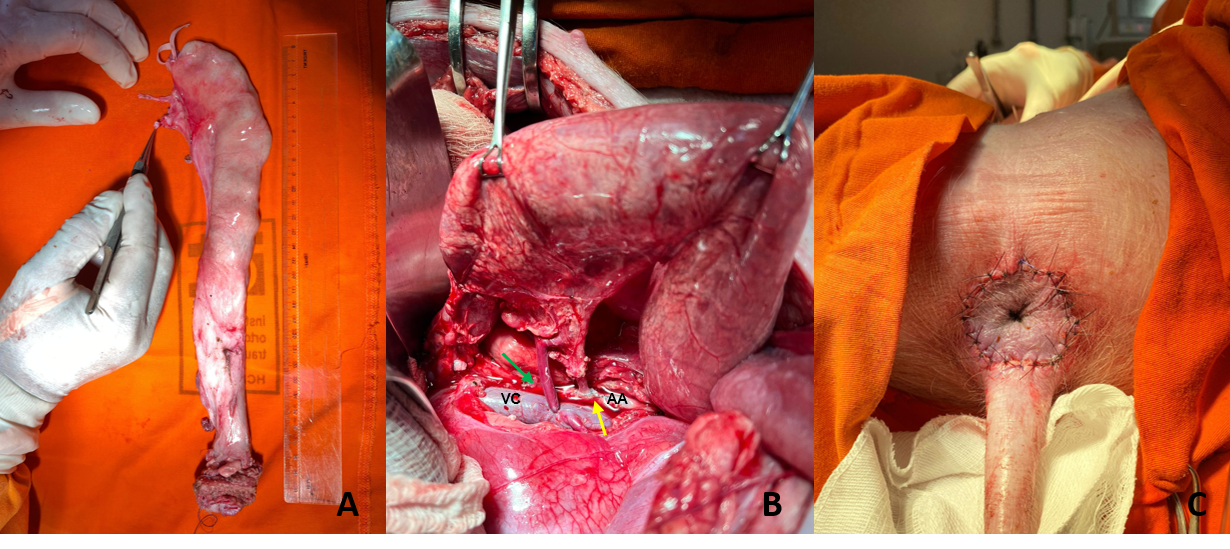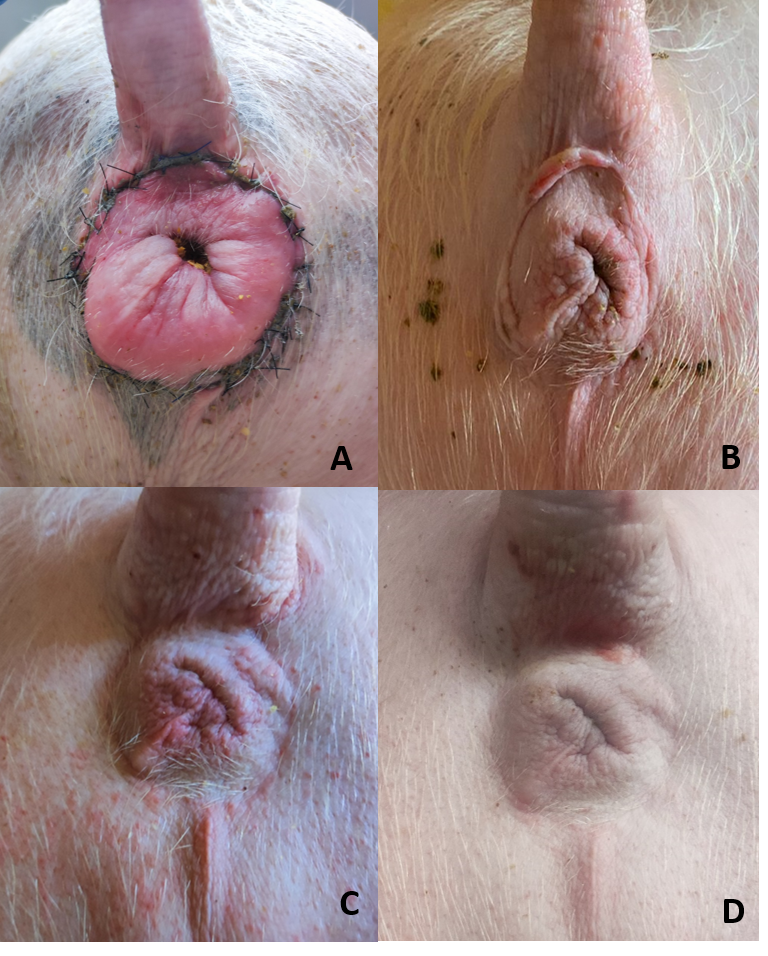Long-term evaluation of anorectal autotransplantation in swine model
Julia B Guarana2, Cinthia Lanchotte1, Silvio H Freitas2, Juliana B Salem1,2, Julia M Silva2, Fernanda V Silva2, Pedro C Cassino1, Giovanna M Ferreira1, Flavio V Meirelles2, Flavio H Galvao1.
1Gastroenterology, Hospital das Clinicas da Faculdade de Medicina da Universidade de Sao Paulo , Sao Paulo, Brazil; 2Veterinary Medicine Department, FZEA-USP, Pirassununga, Brazil
Introduction: Treatments for severe fecal incontinence (FI) and permanent colostomy (PC) are ineffective. Anorectal transplantation (ART) would be the logical treatment severe IF and PC. Murine models of ART showed good graft recovery after a few weeks (1-4). This study aims to evaluate long-term evolution of ART in swine.
Method: ART was performed in 7 male swine as previously described. Graft containing anus, pudendal nerves, rectum, inferior mesenteric artery, and vein (IMA and IMV) was recovery, washed and re-implanted by end-to-side anastomoses between IMA and IMV in the aorta and vena cava respectively, pudendal nerves synthesis, colorectal anastomosis and perianal reconstruction.


Clinical evaluation up to 120 post-operative days (POD) was observed. Anorectal function was assessed by manometry (AM) and colonoscopy in the immediate pre-op period and different times of POD. At the end of the experiment pigs were euthanized for histological evaluation.
Results: Survival rate was 57% (n=4). Animals with good evolution showed tone and signs of good graft reperfusion in the immediate PO. Animals with hypotonia and low perfusion in the 1st PO evolved to necrosis and were euthanized. From 4th post-op week on, animals showed a progressive improvement in the defecation pattern. Clinical examinations of anorectal sensitivity and digital rectal examination showed a progressive return of anal skin sensitivity and anal sphincter contractility after the 9th post-op weeks. Manometry in the 12th and 24th post-op weeks presented mean of pressure waves of 44.4 mmHg and 57.2 mmHg respectively, consistent with normal sfunction. Colonoscopy showed preserved rectum, with contraction and mass movements during the exam.
Conclusions: ART in pigs is technically challenging. Long-term animal evaluation showed good functional recovery of the anal sphincter. Further researches may help to elucidate the mechanism of pudendal and myenteric plexus reconstitution allowing anorectal recovery after ART.
References:
1. Galvao FH et al. Anorectal transplantation. Tech Coloproctol. 2009;13:55–59. doi: 10.1007/s10151-009-0459-5
2. Galvao FH et al. Intestinal transplantation including anorectal segment in the rat. Microsurgery. 2012;32:77–79. doi: 10.1002/micr.20958.
3. Seid VE et al. Functional outcome of autologous anorectal transplantation in an experimental model. Br J Surg. 2015;102:558–562. doi: 10.1002/bjs.9762.
4. Galvao FH et al. Allogeneic anorectal transplantation in rats: technical considerations and preliminary results. Sci Rep. 2016;6: 30894. doi: 10.1038/srep30894.
5. Galvao FH, et al. An innovative model of autologous anorectal transplantation with pudendal nerve reconstruction. Clinics. 2012;67:971–972. doi: 10.6061/clinics/2012(08)20.
6. Araki J, Anorectal Transplantation: The First Long-term Success in a Canine Model.
Ann Surg. 2022 Apr 1;275(4):e636-e644. doi: 10.1097/ SLA.0000000000004141
[1] anorectal transplantation
[2] swine
[3] colostomy
[4] vascularized composite tissue transplantation
[5] anal reconstruction
[6] functional recovery
